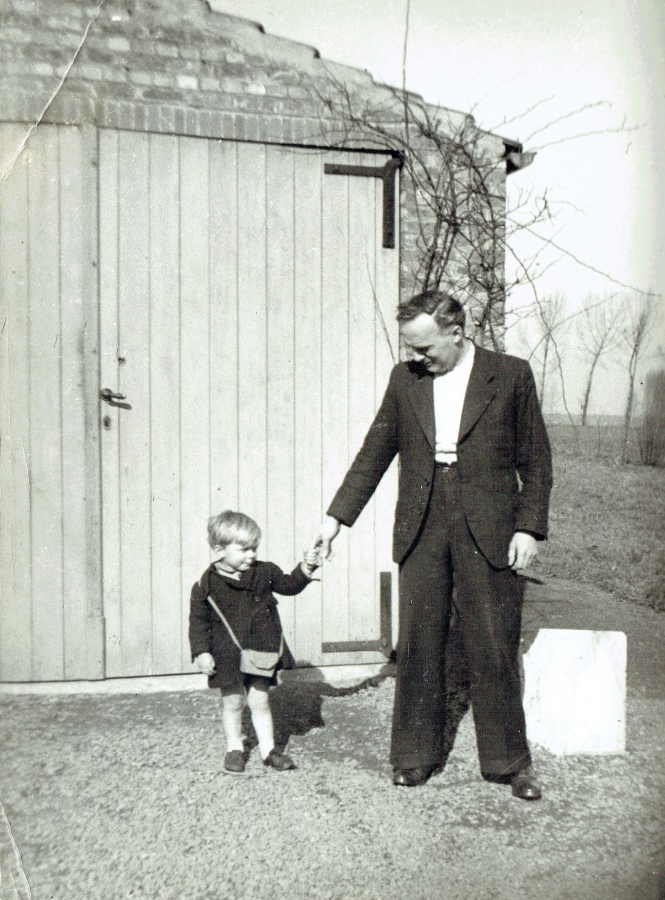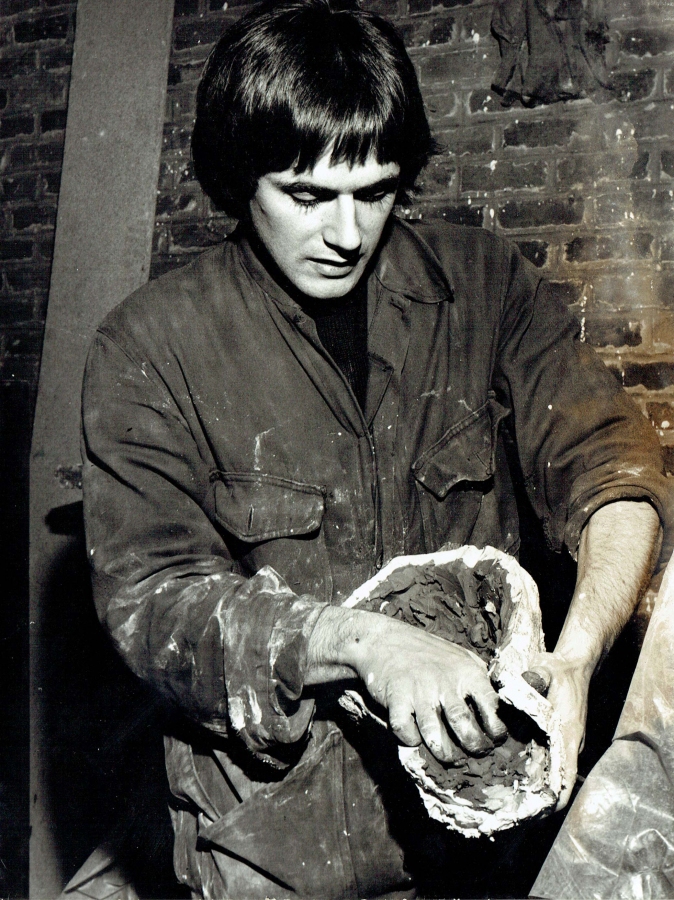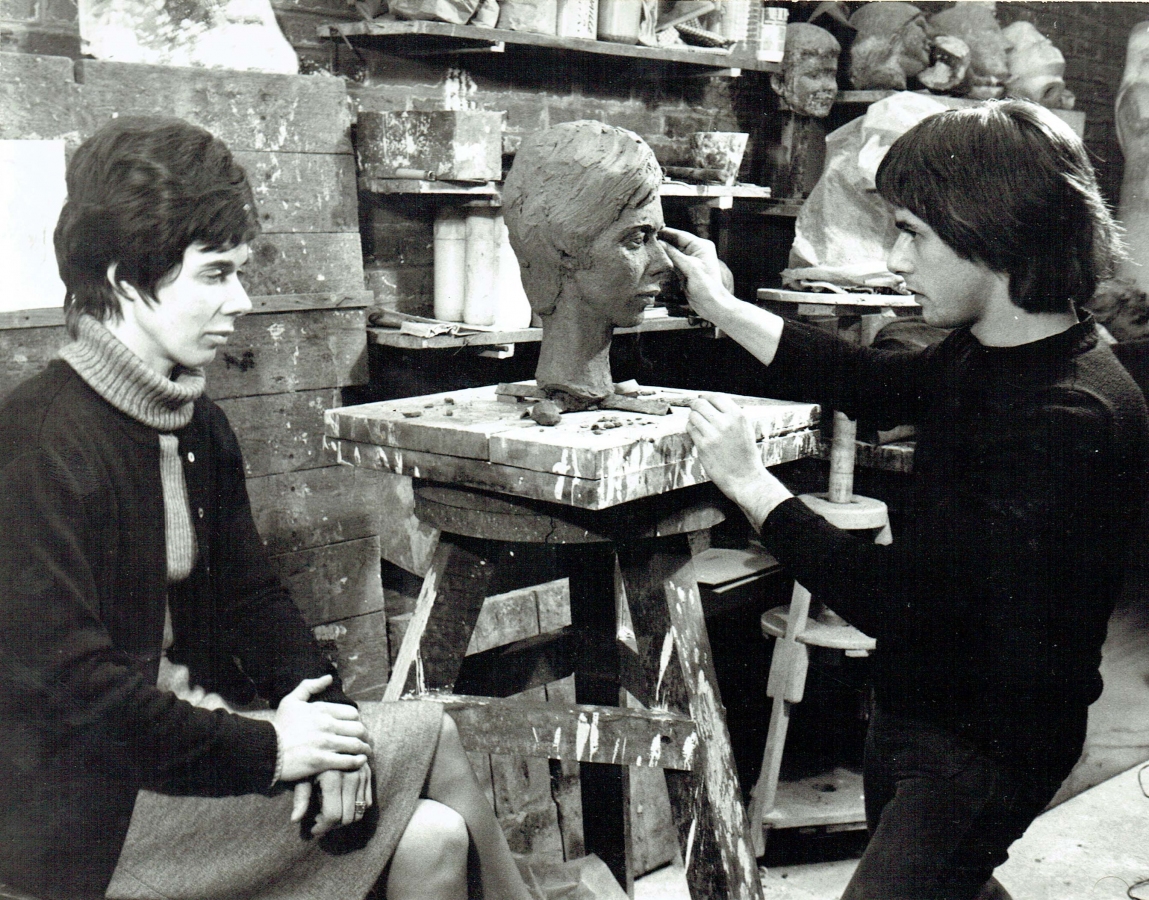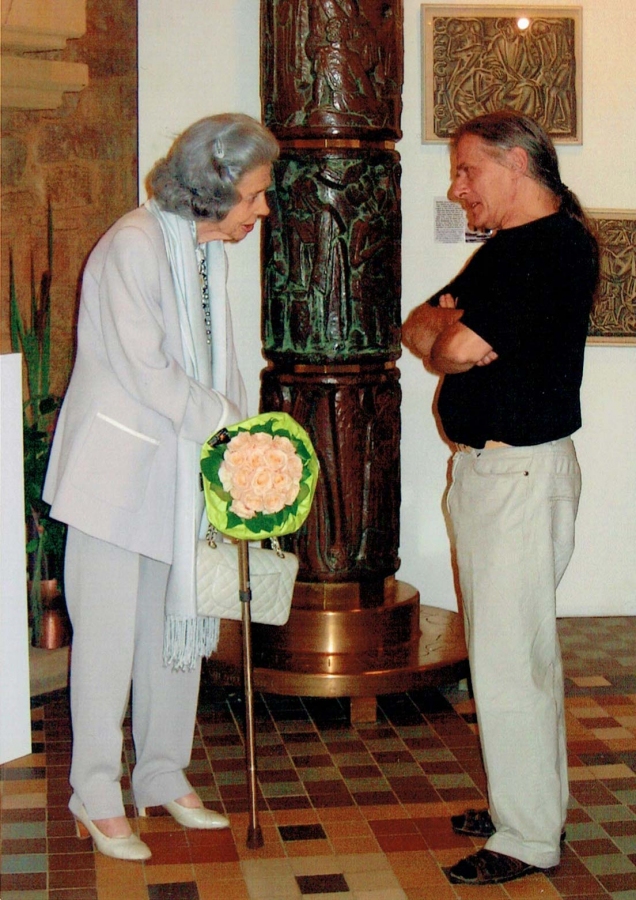
Gustaaf with his father Camille Colruyt
1951What possesses someone to dedicate his entire life to art and live that life as a modern-day hermit? Does an artist do this out of faith or conviction? Or is it in his DNA? For sculptor Gustaaf Colruyt (born in Lembeek, 1948), it’s a little bit of everything. Artistic jack-of-all-trades and didactician “Nonkel Jef” had gone down this path before him while Gustaaf’s father, Camille, dealt in religious art; however, both remained true to the traditions and the rules of the ancient artistic crafts.
Or perhaps Gustaaf felt called by an artistic mission? We instinctively wonder how heavily such a destiny must weigh on the artist and what price he is prepared to pay for it. The answer is probably that the artist has fought free, to live life without chains, without having to compromise. As a child, he was already searching for that essence of what he subconsciously referred to as “being real”, for a sincere world in which he could escape the “illusory environment” in which he grew up. Could this be found in the secret studio in the garden, where his father continuously searched for “artistic purity”, cultivating his statues into an art as synthesis for life and for his Christian faith? Later, after the death of his father in 1973, he would pick up the trails of his father’s search there in that studio. Once the orders stopped coming, he could liberate himself from the studio.

1983The realisation that true art went beyond just a “story” began to dawn on him: with his art, he would start his life’s work, which “isn’t virtual, but is based on fact”. This was the start of a long process of self-discovery for Gustaaf. Now that he was on his own, he could release himself from the artistic bonds he’d borne since his academic schooling. He left the oppressive provincialism of an acquiescing Zenne Valley for Antwerp. Here, he could enjoy all the diversity that the metropolis had to offer to the fullest. But he still didn’t burn his bridges: just like his uncle, he continued to use his artistic skills to benefit the cultural life of his hometown, Lembeek. But here, in the metropolis, he looked upon the world as if through a window. Despite his powerful reticence with regard to the outside world, he was a child of his times. He gradually revolted against the academic certainties and has lived “on the fringe” ever since, far away from the well-trod artistic paths.

1983Gustaaf Colruyt’s creation processes consists of many phases. Everything starts with a necessary yet inconclusive phase where a coincidence, a story or a figure in motion forms the impetus for the statue-to-be. In his second phase, the statue is given shape and the foundations are architecturally built up so that the statue “stands”. From here, the subject or the story is released as the first seed so that the original concept is completely silenced. The sculptor’s art begins to dance around with “intuitive skills” from this point forward: in this paradox, the contradiction can be given up to two self-complementary principles. Just as one can give up one’s ego in the search for one’s true self, the sculptor lets the statue “die”: “Just like in Jacques Brel’s music, the story, the voice, the mimicry and the commitment that served as pretences in determining the shape, EXPLODED, so that the (ravaged) soul filled the concert hall”.

Gustaaf with Queen Fabiola
2008 - OrvalThis is how Gustaaf Colruyt’s statues fill up and master a space. The gap that develops between the statue and the well-delineated room is the space in which the spectator moves, experiencing the tension, the energy and the passion of the statue. The border between the creator and the spectator is dissolved at that moment that the sculptor releases the seed and the statue has now become “him”.
Gustaaf Colruyt’s statues are a game of all or nothing in which the feel for the “present” does not want to be enclosed by any concept. It is a game of “correct” or “incorrect” efforts.
Jean-Pierre Laus